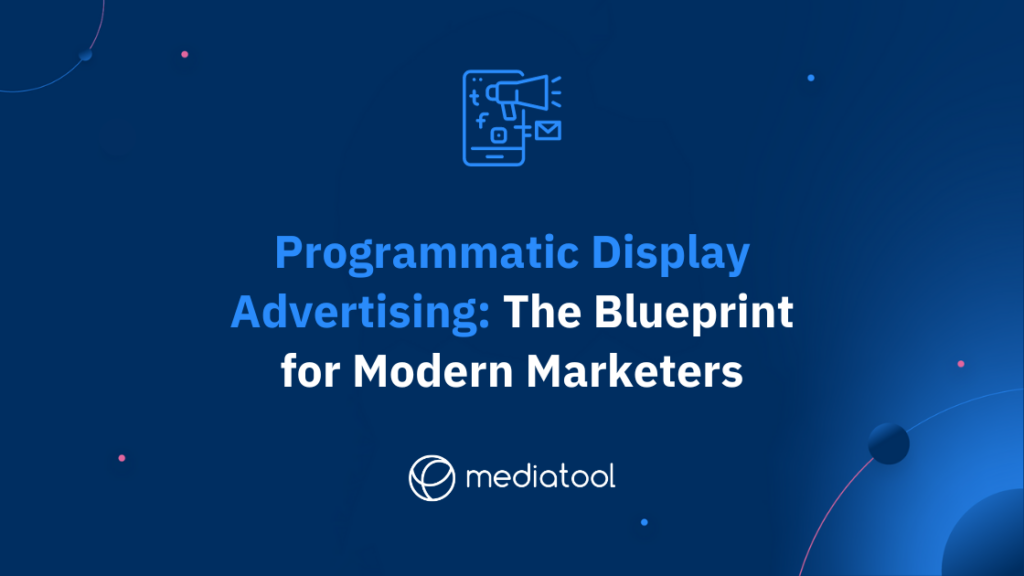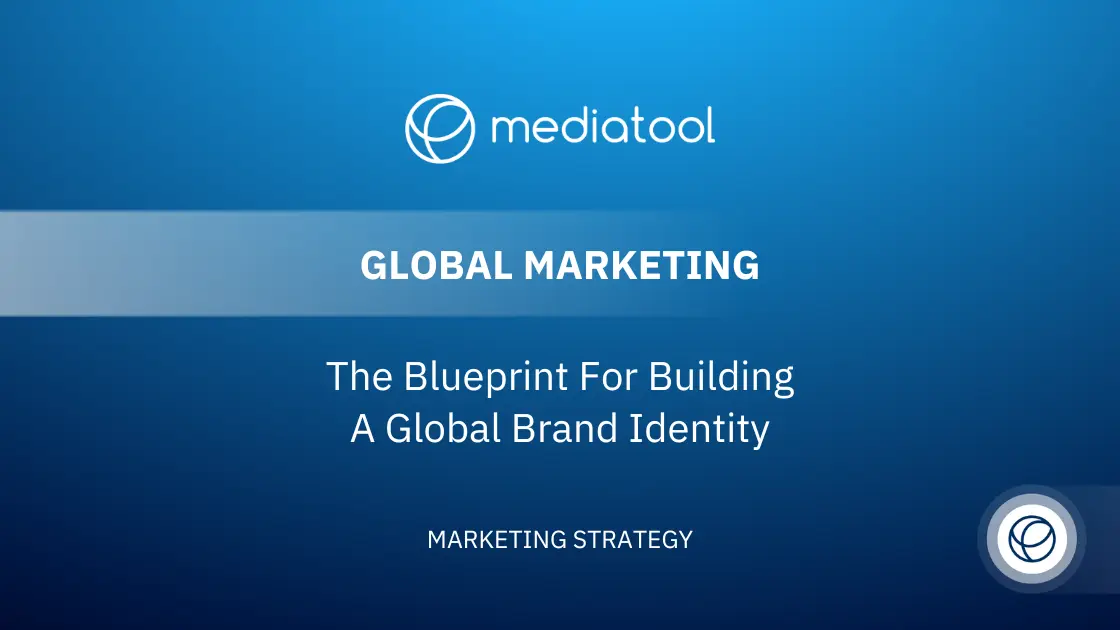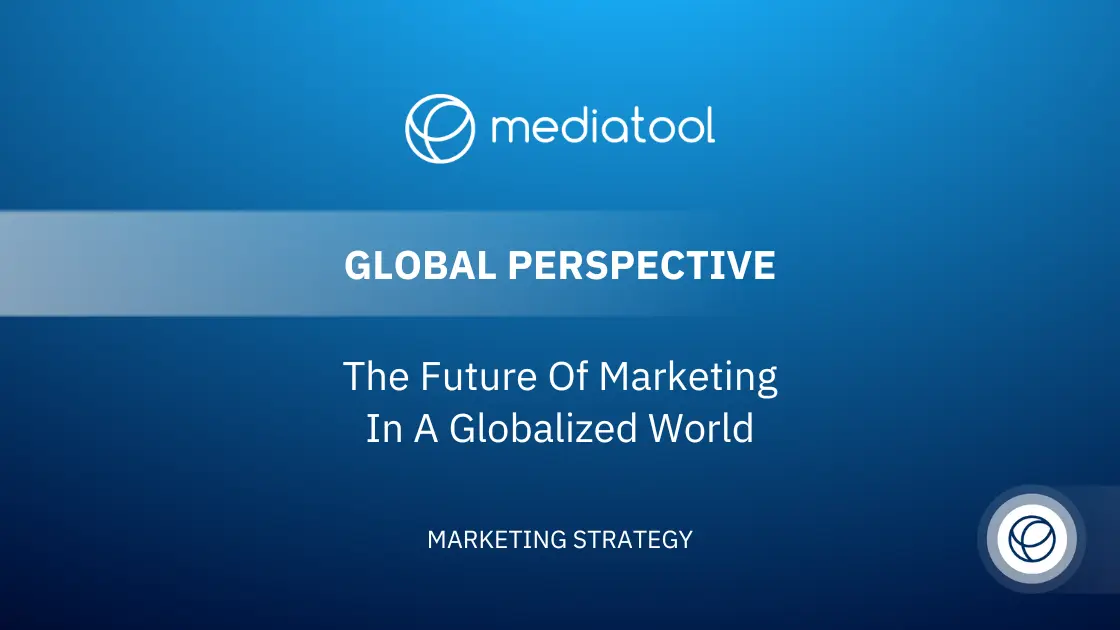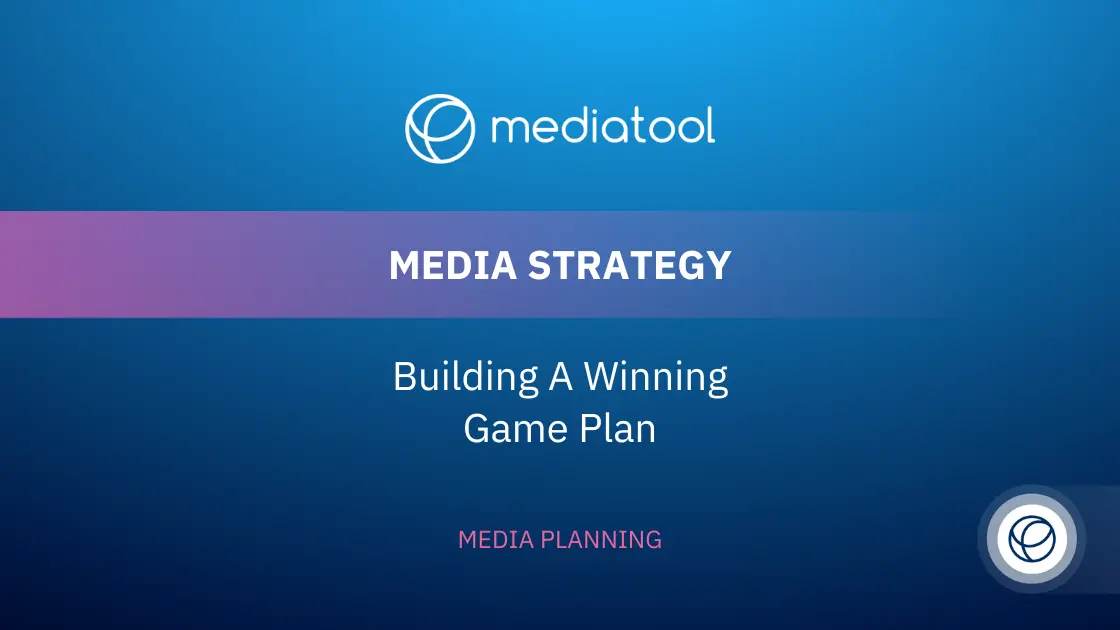Navigating the dynamic digital marketing landscape requires not just creativity but also a keen understanding of evolving technologies. Enter Programmatic Display Advertising – a powerful, technology-driven ad-buying process that’s reshaping how businesses connect with their audiences online.
This innovative approach, leveraging real-time bidding and automated ad placements, is rapidly becoming a cornerstone of effective digital marketing strategies.
Consider this – programmatic advertising spend is projected to surge to a staggering 725 billion by 2026, underscoring its growing significance in the digital advertising realm.
Yet, despite its burgeoning popularity and significant financial implications, many marketers find themselves grappling with its complexities. The intricacies of auction-based, real-time bidding, and leveraging data-driven strategies can seem daunting.
But here’s the twist: Once mastered, programmatic advertising can be an incredibly potent tool in your digital marketing arsenal. Its precision, efficiency, and capacity for delivering insightful analytics are unparalleled, allowing for highly targeted marketing strategies. This is not just about buying ad space; it’s a sophisticated dance of display ads, banner ads, and ad placements across multiple ad exchanges and networks, including the Google Display Network.
In this comprehensive guide, we’ll peel back the layers of programmatic and display ads, offering clarity on how this method can revolutionize your online advertising efforts. From navigating ad networks and ad inventory to understanding the nuances of ad formats and target audience engagement, we’ll cover it all.
Whether it’s leveraging the power of the Google Ads platform, exploring rich media possibilities, or understanding the nuances of demand side platforms and supply side platforms, this article is your gateway to mastering programmatic display ads.
Are you prepared to get into the world of real-time bidding, automated processes, and advanced ad targeting?
Are you ready to see how programmatic ad buying can streamline your advertising campaigns, enhance your marketing strategy, and deliver substantial ROI?
If so, let’s take the plunge into the future of advertising and discover how programmatic display advertising works to your advantage.
Welcome to the era of programmatic media buying – where every ad impression, every piece of ad inventory, and every display ad campaign can be optimized for maximum impact.
Let’s begin!
What is Programmatic Display Advertising?
Programmatic display advertising, in its essence, is a blend of technology, automation, and real-time bidding, giving birth to an ad-buying process that is precise, efficient, and data-driven. It’s an incredible leap from traditional ad buying, where everything had to be manually done.
We need to clarify one point: programmatic doesn’t mean devoid of human touch. Technology plays a major role, but humans still guide the process. They set the parameters for the campaign, like the target audience, the bid amount, and the key performance indicators (KPIs). Then, the technology executes the buy, places the ad, and optimizes the campaign in real time.
One of the game-changing aspects of programmatic display advertising is the advanced targeting it enables. Ever noticed how online ads seem eerily relevant to your interests? That’s programmatic targeting at work. It uses data to understand user behaviors, interests, and demographics. As a result, you can ensure your ad reaches the right person at the right time. Think of it as delivering a personalized message to millions of individuals instead of a generic message to a mass audience.
Programmatic advertising comes with a treasure trove of data. With this data, you can optimize your campaign, tweak your strategies in real time, and make informed decisions. No more shooting in the dark!
Now, you might think, “This sounds complicated. I’ll need a whole team to manage this, right?” Not necessarily! That’s the beauty of programmatic advertising. You don’t need an army of professionals. A small, skilled team can handle it. Plus, various Demand Side Platforms (DSPs) and Supply Side Platforms (SSPs) help you along the way.
Programmatic display advertising is a powerful tool that harnesses the power of technology and data to streamline the ad-buying process, enhance targeting, and deliver insightful analytics. It’s the billboard ad network of the future, designed for the digital age! Ready to embrace the future? Let’s move on and uncover how this innovative process works!
How Does Programmatic Display Work?
The Fascinating World of Programmatic Ads
Welcome to the exciting realm of programmatic display advertising, where the fusion of technology and strategy is reshaping the landscape of digital marketing and online advertising.
This section will guide you through the intricate yet fascinating process of programmatic ad buying, a method that has revolutionized the way we purchase ad space and execute advertising campaigns.
Core Components: DSPs and SSPs
At the heart of programmatic advertising are two pivotal elements: Demand Side Platforms (DSPs) and Supply Side Platforms (SSPs). DSPs are the tools that advertisers use to buy digital ads across multiple ad exchanges and ad networks, including the Google Display Network.
Meanwhile, SSPs enable publishers to sell their ad inventory in an automated and efficient manner. This synergy between DSPs and SSPs underpins the programmatic ad buying process, facilitating seamless transactions in the digital advertising space.
Setting Up a Campaign on a DSP
Launching your programmatic display advertising campaign begins on a DSP. Here, digital marketers define their target audience, allocate ad spend, select desired ad formats (like display ads, banner ads, or video ads), and set maximum bids for ad impressions. This strategic planning is crucial for aligning your display campaign with your overall marketing strategy, ensuring you effectively reach your intended audience.
The Role of SSPs in Ad Space Availability
Simultaneously, on the supply side, publishers list their available ad space on SSPs, detailing their audience demographics and supported ad formats. They set minimum bids for their ad inventory, preparing for the incoming real-time bidding (RTB) process – a critical component of programmatic ad buying.
Real-Time Bidding: The Heart of Programmatic Buying

The essence of programmatic display advertising lies in its real-time bidding feature. Each time a user loads a web page, a rapid auction takes place. The DSP evaluates the available ad spaces against the advertiser’s criteria. If a match is found, it bids for the ad space. This process, happening in milliseconds, epitomizes the efficiency of programmatic buying.
Ad Placement and Continuous Optimization
Winning a bid leads to the immediate placement of the ad on the user’s screen – right place, right time, right context. But the journey doesn’t end there. Programmatic display ads are continuously optimized based on performance data. DSPs adjust bids and targeting strategies in real-time, maximizing ROI for the advertiser.
The Future is Now: Embracing Programmatic Technology
Programmatic display advertising offers a level of control, precision, and efficiency that traditional advertising methods can’t match. It harnesses the power of digital marketing tools, programmatic technology, and data management platforms, enabling advertisers to effectively utilize their ad spend.
Whether you’re looking to buy ad space online or launch a comprehensive programmatic advertising campaign, understanding and leveraging the power of programmatic buying is essential in today’s digital world.
As you embark on your journey into the realm of programmatic display advertising, remember that this innovative approach is not just about ad placement on a web page; it’s a strategic, data-driven method that enhances your entire digital display advertising strategy. Are you ready to tap into the potential of programmatic ads and transform your online advertising efforts? The future of digital advertising awaits!
Why is Programmatic Display Important?
If you’ve ever wished for a crystal ball to better understand your customers, programmatic display advertising might be your answer. Its relevance and significance in today’s digital world cannot be understated. Let’s take a closer look at why this type of advertising is the superhero we didn’t know we needed.
Deliver personalized experiences in this ad space
Remember how we talked about sending a personalized message to millions of users instead of a generic one to a mass audience? That’s a powerful marketing advantage. Leveraging user data ensures your ads are relevant to your audience’s interests, behaviors, and demographics.
No more wasting resources on casting a wide net and hoping for the best. With programmatic, you can catch the right fish in the right pond!
The value of real-time data and analytics is priceless
Traditional advertising can take days, weeks, or even months to analyze a campaign’s performance. With programmatic display advertising, you get real-time feedback on your ads’ performance. This means you can make quick adjustments to optimize your campaign. If an ad isn’t performing well, you can identify and fix the problem immediately.
Efficiency of the whole process
Remember when buying ad space meant a lot of back-and-forths, negotiations, and paperwork? Those days are long gone. Now, you have machines and algorithms taking care of the grunt work. And guess what? They’re faster, more accurate, and operate 24/7. Your time can now be spent on strategizing and creating killer ad content.
Extended reach of programmatic and display ads
With programmatic, you’re not limited to a single publisher or platform. You can access a vast network of websites, apps, and social media platforms. This allows your brand message to reach far and wide, boosting your visibility and brand recognition.
As a testament to this reach, consider this: in the first quarter of 2022, programmatic advertising was capable of reaching an impressive 92% of households. In fact, programmatic display ad spending is expected to grow by 16.9% in the US this year – the highest growth rate of any country we track.
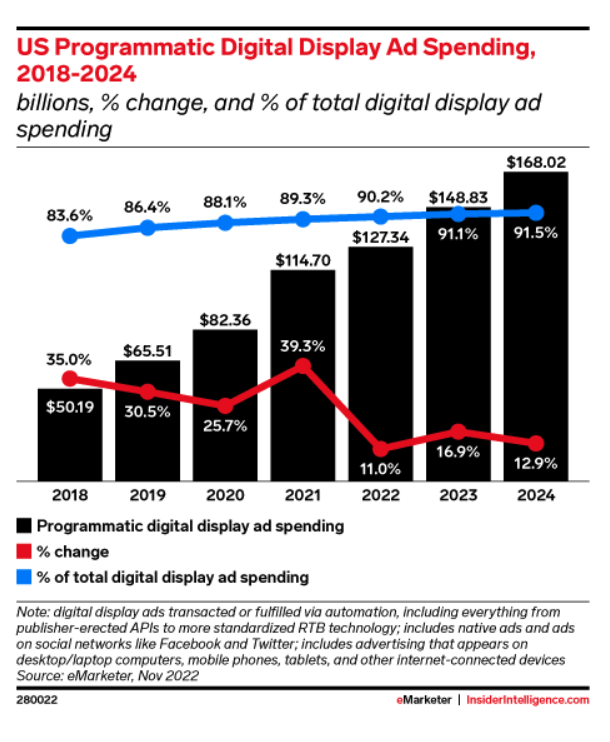
This clearly shows the growing trust and reliance on this efficient form of advertising!
Finally, let’s talk about the transparency and control it offers.
With programmatic, you know exactly where your ads are displayed, who’s seeing them, and how they interact with them. You’re in the driver’s seat, controlling your ad spend, targeting, and overall campaign strategy.
It’s an empowering feeling, isn’t it?
It’s important to note that programmatic advertising isn’t just about the technology and potential reach; it’s also about the results. In fact, due to the better ROI and performance that programmatic offers, 19% of advertisers are increasing their programmatic spend. This shows that programmatic isn’t just a trend; it’s a proven strategy delivering actual results for advertisers.
Programmatic display advertising is important because it’s efficient, data-driven, and highly targeted. It offers unparalleled control, transparency, and extended reach. It’s not just a way of buying and displaying ads; it’s a way of making every dollar count, every user experience matter, and every campaign a potential success story.
So, ready to unlock the power of programmatic display advertising for your brand? Let’s keep the momentum going and dive into the types of programmatic display advertising next!
Types of Programmatic Ads
Just when you thought you had a handle on programmatic display advertising, it throws a curveball your way. You see, there isn’t just one kind of programmatic display advertising. There are several types, each with its unique characteristics and advantages. Let’s roll up our sleeves and dig into this fascinating variety.
Real-Time Bidding (RTB)
The most common form of programmatic advertising. Remember the flash auction we discussed, happening in milliseconds as a webpage loads? That’s RTB! Here, ad impressions are bought and sold on a per-case basis in real-time. It’s like eBay, but the auctions finish before you can blink. The key benefit? Efficiency and cost-effectiveness, as you only pay for the impressions that meet your specific criteria.
Programmatic Direct
Think of this as a reserved seating system. Advertisers and publishers agree on the deal upfront, reserving a specific number of impressions for a fixed price. Similar to booking a VIP table at a restaurant. You know what you’re getting and are willing to pay a premium for it. It’s great for securing premium ad spaces and getting predictability in your campaign.
Private Marketplaces (PMPs)
These are invite-only marketplaces where high-quality publishers offer their ad inventory to select advertisers. Similar to a private club where members get exclusive access to premium goods. The upside? You get access to high-quality inventory unavailable in the open market.
Programmatic TV
Yes, you read that right. The realm of programmatic isn’t limited to just the online advertising spaces. It’s expanding into the world of TV advertising as well. With Programmatic TV, you can serve targeted ads to specific audience segments through connected TVs and Over-The-Top (OTT) devices.
Imagine having the ability to serve a personalized ad to a family watching their favorite show on a streaming platform. That’s the power of Programmatic TV!
Programmatic Audio
This is the new kid on the block, making waves in the programmatic world. This involves automated buying and selling of audio ad inventory on music streaming platforms, digital radio, and podcasts. Given the rising popularity of audio content, this is an exciting space to watch.
And there you have it – an array of programmatic display advertising types to cater to every advertising need. Each type offers a unique blend of advantages, be it efficiency, control, premium inventory, or multimedia reach. The key is to understand which type aligns best with your campaign goals.
Now that we’ve covered the different types of programmatic display advertising, you’re one step closer to launching your own campaign. Ready for the final step? Let’s talk about how to get started with your first programmatic advertising campaign!
How to Get Started with Your First Programmatic Advertising Campaign
You’ve made it to the end of our programmatic display advertising journey, and the real fun begins here!
You’ve graduated from “Programmatic Display 101,” and now it’s time to step into the real world.
Let’s discuss how you can get started with your first programmatic advertising campaign.
Set Clear Goals
Any successful journey starts with a clear destination. What do you hope to achieve with your programmatic display campaign? Are you looking to boost brand awareness? Drive website traffic? Increase sales? The answers to these questions will guide your entire campaign strategy.
Define Your Target Audience
Knowing your target audience is like having a map for your journey. You can leverage user data to understand your audience’s demographics, interests, behaviors, and online habits. This will help you deliver ads that are relevant and engaging.
Choose the Right DSP
Picking a DSP is akin to choosing a vehicle for your journey. Each DSP offers different features, interfaces, reach, and pricing models. You’ll want to pick one that aligns with your budget, goals, and technical capabilities.
However, be aware that choosing and integrating a DSP with your other marketing tools can present a significant challenge.
A 2022 survey among strategic ad technology investment decision-makers found that connecting DSPs with other marketing tools was considered the largest programmatic advertising challenge worldwide. But don’t let this deter you! With the right support and guidance, you can overcome these hurdles and set yourself up for success.
Create Engaging Ad Content
The heart of your campaign is your ad content. Make it eye-catching, relevant, and engaging. Remember, you’re not just competing with other ads; you’re competing for attention in a digital world full of distractions.
Set Your Budget and Bids
Decide how much you’re willing to spend on your ad campaign and how much you’re willing to bid for each ad impression. This is a delicate balancing act. Bid too low, and you might miss out on valuable impressions. Bid too high, and you could exhaust your budget too quickly.
Launch Your Campaign
Once everything’s set, it’s time to launch your campaign. But remember, this isn’t a “set it and forget it” situation. You’ll want to monitor your campaign closely to ensure everything runs smoothly.
Analyze and Optimize
This is where the power of real-time data and analytics comes into play. Analyze your campaign performance regularly and make necessary adjustments. Is one ad outperforming others? Allocate more budget to it. Is a particular demographic responding better? Narrow down your target audience.
Iterate
It’s time to take stock once your campaign has ended. What worked? What didn’t? Use these insights to refine your future advertising campaigns. Remember, programmatic display advertising is a continuous learning journey.
So there you have it – a roadmap to launch your first programmatic display advertising campaign. It may seem overwhelming at first but don’t worry. You’ll learn, adapt, and improve with every campaign you run. The world of programmatic display advertising is exciting, dynamic, and full of potential.
